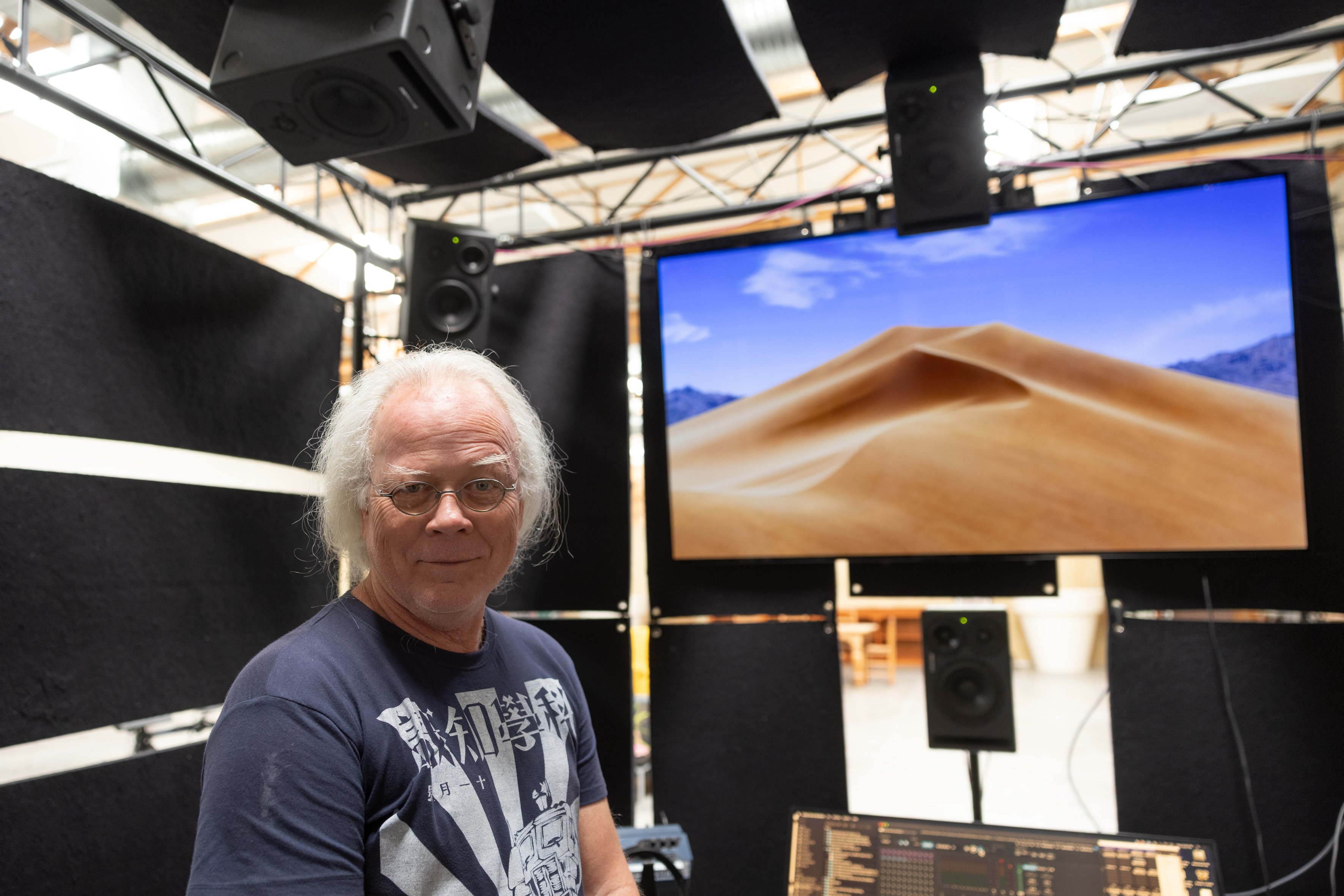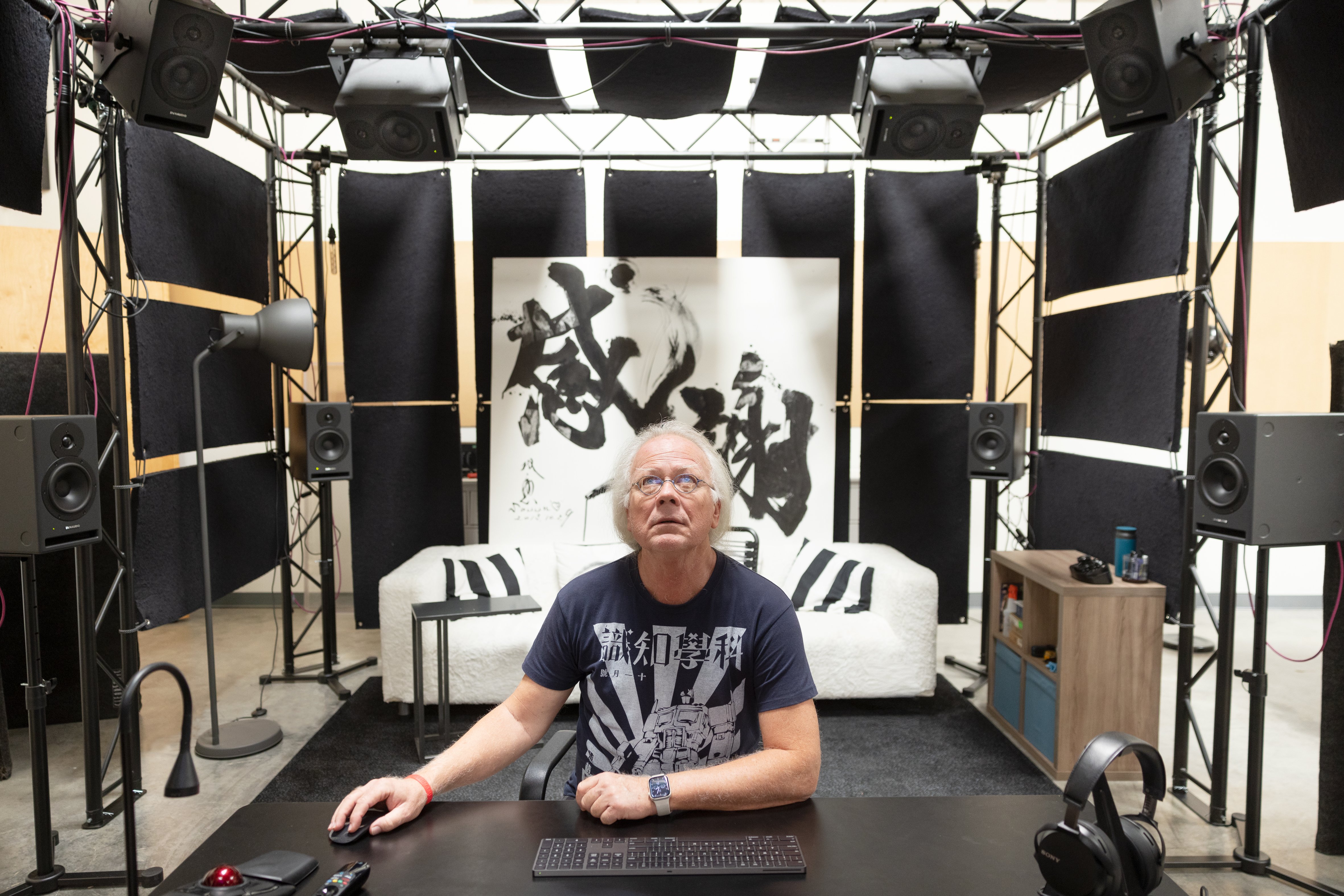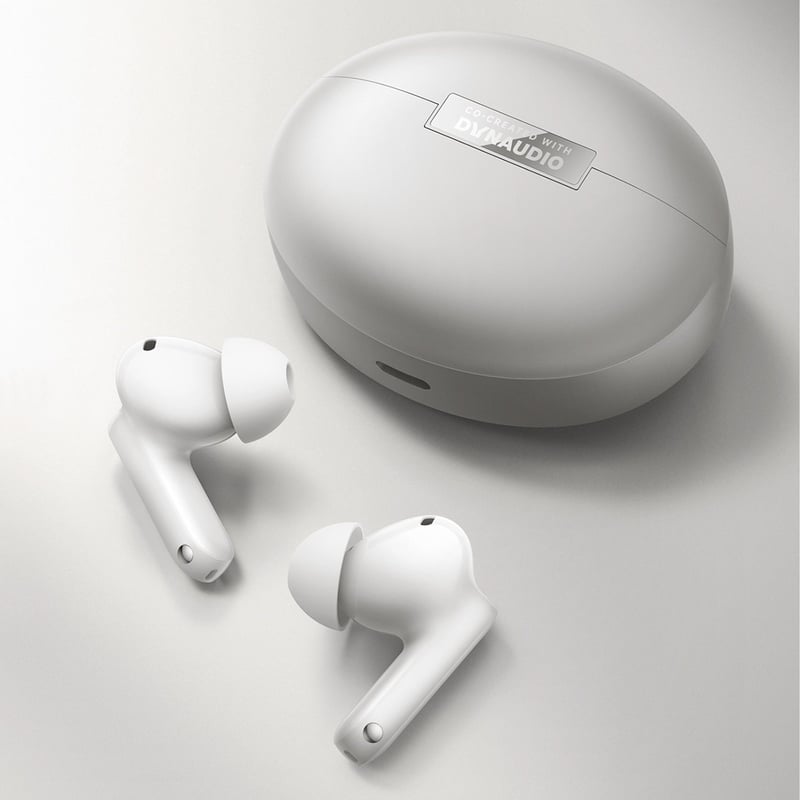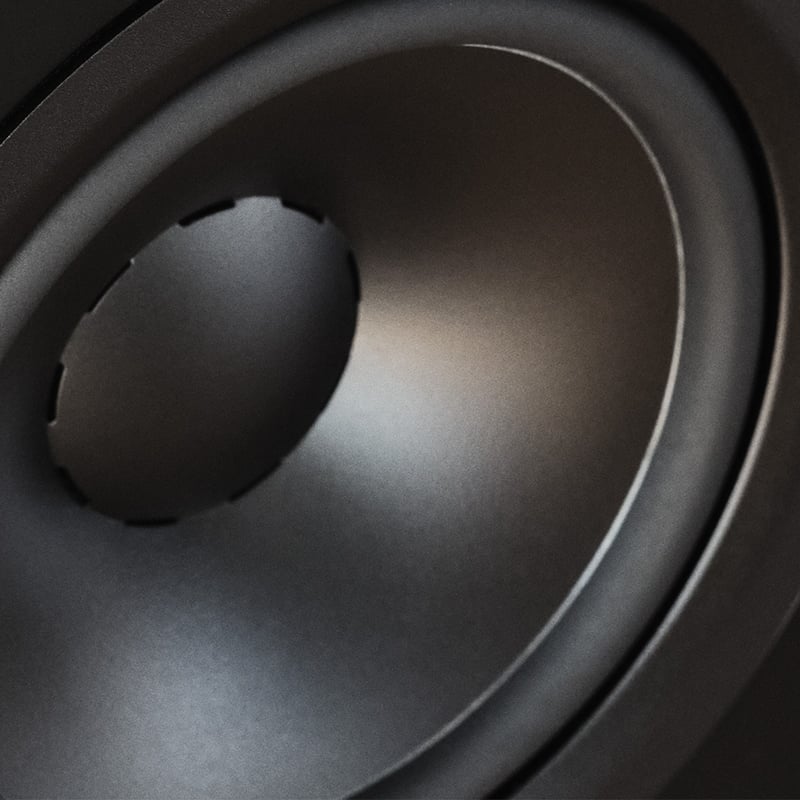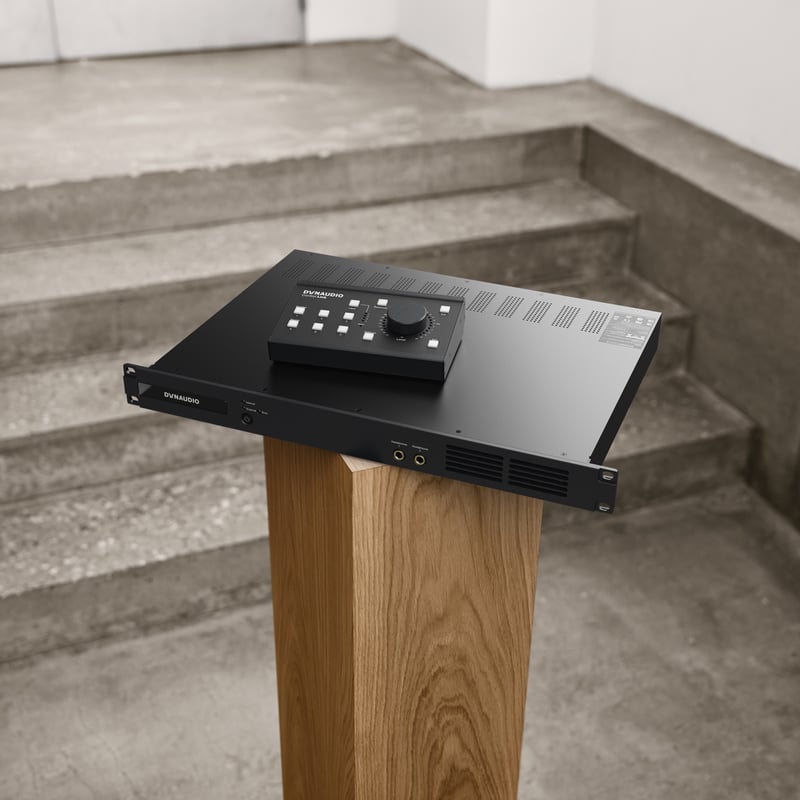Greg Penny’s cavernous warehouse studio building has a car inside it – a beautiful vintage convertible VW Beetle. And two Vespas. Plus a dining table that could easily seat 20 people. And a three-piece suite.
Most importantly, there’s a big porcelain model of a dog’s skeleton. Because of course there is.
Welcome to California.
When you meet Penny, you stop being surprised by any (well, most) of the weirdness in his workspace. He’s California, personified: a laid-back, generous, slightly-wacky-in-a-good-way music fanatic. He loves everything about it – playing it, producing it, mixing it, listening to it…
And that shows in his back-catalogue. He’s produced albums for k.d. lang (including Absolute Torch and Twang and Ingénue), eponymous albums by Paul Young and Eddi Reader, a great many Sparks and Rickie Lee Jones records, Cher’s It’s a Man’s World… and Elton John’s Made in England.
He got on so well with Sir Elton (their friendship and work goes back decades) that he’s now painstakingly working through the artist’s back-catalogue to transform it from regular stereo to fully immersive Dolby Atmos and Sony 360 Reality Audio formats.
And, for that, he needs a very specialised studio.
In sound we truss
“The space was available, where we wanted it to be, next to a smaller room. And the solution we found to keep the sound controlled was this crazy structure,” Penny says, gesturing around the assorted triangular steel trusses, weird acoustic panels… and large gaps in the control room walls.
It looks absolutely nothing like the image that comes to mind when someone tells you to picture a mixing/mastering suite.
Penny explains that it was born out of necessity; of not having the time or inclination to build a room-within-a-room-within-a-warehouse that would eventually have to be torn down anyway. This construction is modular – it’s made entirely of discrete parts – and can be disassembled and moved for specific projects as a pop-up if need be.
“So far, so good, fingers crossed. We’ve been really lucky with the results,” he adds.
He also stresses how much careful thinking went into how they could build the room like this and still maintain acoustic control: “I’d seen some Atmos set ups using a lighting truss as a large speaker stand. They're not the most cost-effective things in the world to buy, but because you can make a room out of them that's virtually indestructible, and because it comes together like a Lego set, it has a pretty small footprint when you break it down.
“I decided to go for a pretty standard I-beam lighting truss, and then powder-coated it black. The cotton panels were inspired by my very close friend, Bruce Botnick, who has a similar version in his studio here in Ojai. They're basically shredded T-shirts, dyed and then compressed at six pounds per square inch. They came in huge boxes and we bought, I don't know, like, four cases of them. We bought a grommet punch and literally set up a factory to be able to make these this way.
“I’d found a photographer on YouTube who uses these ball bungee cables, and he's like, you know, 'I'm an incredible photographer, I travel all over the world, and this is the most important thing in my bag.' And I thought, ‘Well, that's interesting’.”
The bungees don’t rattle, they don’t make any noise, and they’re super-strong, Penny says. So he bought a bunch of them and hung the panels. Job done.
“We could enclose it, but we felt that as we were using it, there wasn't any point because it was really comfortable. You don't feel that compression that you feel out of a small room,” he points out.
And you’d be surprised at how well it works, too. Once you’re sitting in the sweet-spot it’s as if the rest of the huge space disappears. But that could be something to do with the sheer amount of loudspeakers pointed at your head…
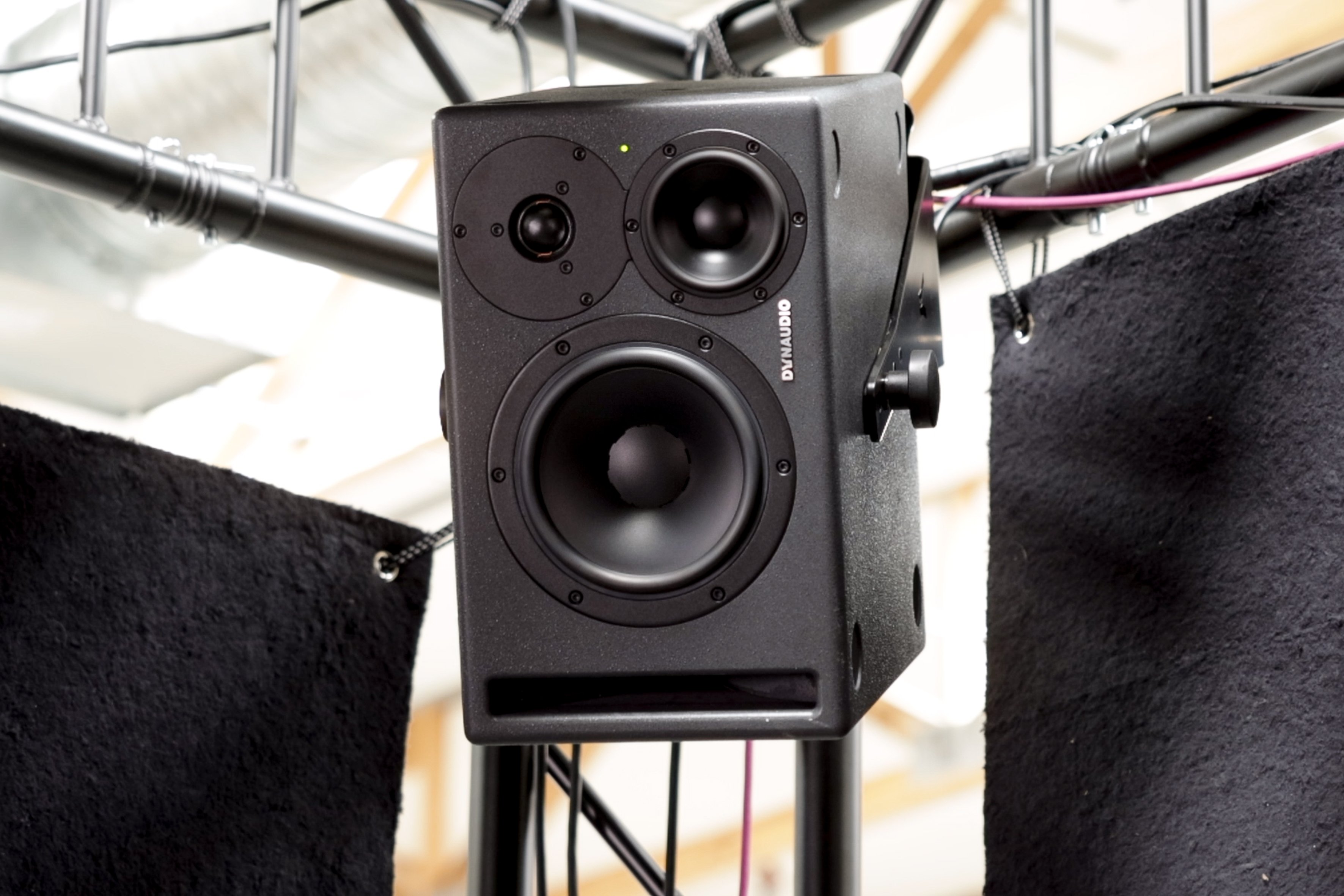
Total immersion
In fact, Penny works with two immersive formats: Dolby Atmos and Sony 360 Reality Audio – so there are two speaker configurations in play here, simultaneously.
The studio contains a full 7.1.4 Atmos set-up (which, of course also covers you if you’re mixing in ‘flat’ 5.1, 7.1 and so on). Then there are extra speakers in an LCR formation at the top-front, plus three-way side speakers for the Sony 360 work.
“The front of the room is all three-way Core 47s, because we were need real clarity and definition out of vocals, and things that are generally in the front of you in that immersive mix,” Penny says. “So the front of the room is 47s – three-ways – and for the Atmos portion of it, you have this medium, kind of, level, hemisphere down here. And then you've got these four speakers overhead in addition to the sub there. These are all compatible power-wise right out of the box, you can set them with the toggle switch on the back. It was interesting because the big experiment for us was, if we put three-ways in the front, what will happen if there are two-ways, you know, around the back and above us? But they're super harmonious. It works great.”
The Sony system would normally be nine matched monitors in the front, he says, but this set-up essentially gives a stacked 5.1 configuration.
”In this case, we cheated it because of the real-estate in the room; we didn't want to have to move our Dynaudio Core Sub every time we switch over to listen to something in the 360 system. So our front end of the room has a phantom centre. And it works fine.“
There’s a special speaker too, Penny adds (“I would call it ‘profile’”), for when he opens up the Sony tools: that profile is specifically designed for his speaker setup.
“The Sony 360 system it ends with the high speakers; the room ends here, so all we have to do when we need double-duty is to move our side Atmos speakers to be exactly even with the pitch of the rear of the Sony speakers. The Sony speaker's room stops at this point, so it's only the Atmos system that uses the speakers back in the corner.”
That makes a total of 18 speakers. “Not nearly enough, but it gets the job done!”, he grins.
Penny stresses the importance of accuracy once more, telling us how they were very particular about getting the height right. “The specs are super-good,” he adds.
“She just turned around and said, ‘I can’t believe it, I’ve never heard music like this’. Then she was up dancing for the next song!”
Greg Penny, on people experiencing immersive audio for the very first time
SP heaven or SPL?
So, what’s it like working in that kind of room? It might be semi-open, but you still have a lot of sound coming right at you – and sometimes at very high SPL.
“That's another reason why I love the Core series: they're super easy on my ears, and I don't work at high volume,” Penny explains. “I'll play it back at high volume, but I can regulate the volume with the Atmos renderer as my master control. I can turn it up or down either from somewhere on the keyboard, or the mouse. I get a completely uniform shift in volume without the tone colour changing.”
He grimaces a little. “I was somewhere the other day working that doesn’t have Dynaudio speakers – and, as much as I love the room, when I cranked it up it just felt like a completely different speaker. When I turned it way down, it got lopsided. It seemed to move the centre image a little bit. It was disappointing, and I think one of my favourite things about not only the Core, but the Airs before them, which I use them in my second room, they never change colour. The colour is consistent throughout, they don't get weedy or weird when they're turned down low. Super efficient, you know, love them.”
The room design and the speaker placement all work together, Penny says, telling us that a few friends of his “who are a little more technical than I am” have suggested that the reason it works so well for immersive is that placing the speakers this way minimises reflections.
“Even though the big room is out there, you can hear that it blocks the sound going out, and then if it does get it, it's half as much coming back because it's like a big sponge in the middle of the room.” And that’s a massive plus if, like Greg, you tend to work for a lot of hours at once. The sound never gets hard.
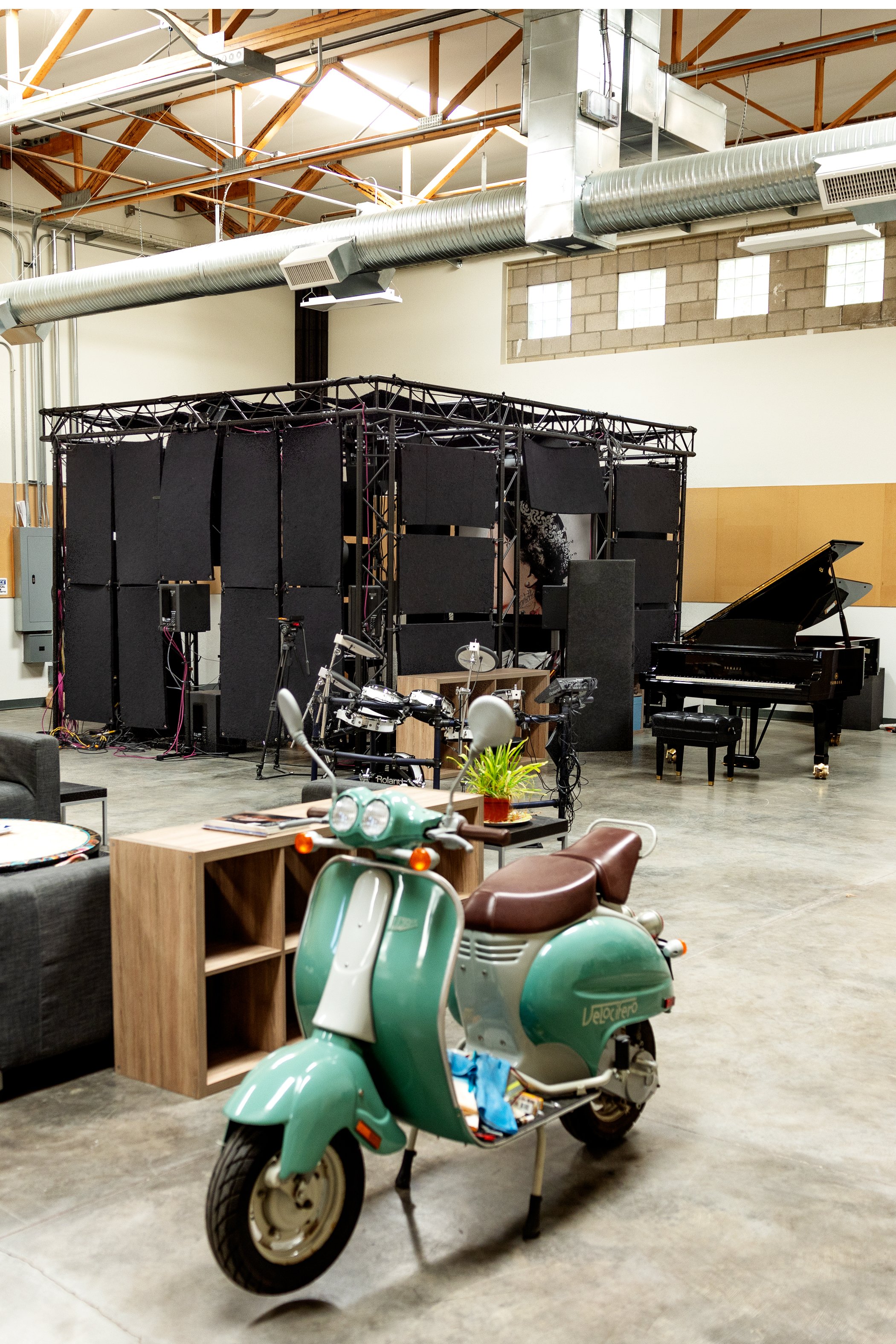
Attention to delay details
On the DAW side, Penny uses Pro Tools, but he also has a UA Satellite for running additional plug-ins as well as a host of analogue outboard gear. So, he regularly does take stems in the mix outside the box for analogue processing… but it comes with a challenge.
“When mixing entirely in the box, you are much less likely to have internal delay problems,” he says, pointing out that there are some inherent delays that occur – especially if objects and bed tracks aren’t planned in a certain way.
“First of all,” he goes on, “we’re a single machine, so it’s possible to have a single machine playing back and capturing – but because of the DSP usage, and because of the routing that you might create, you can get delays within the system because the objects leave the source earlier than the bed.
“So, we do some delay offsets to make it work when we introduce an outboard piece of equipment such as EQ, compressor or reverb. And part of the reason why we do that is you just can’t get that rich sound with a plug-in. It’s just – nearly – there, and obviously I do use a lot of reverb plug-ins in all my mixes, but you know, to have a really big, fat, beautiful reverb on the outside is great. Therefore, we compensate for them, meaning that I do a lot of pre-delay calculations in my main reverbs, so the delay that's introduced by going out and coming back in again has been adjusted.”
He’s quick to add that before he prints, he always checks those delays. There may be other ways around it: “For instance, you could get a more powerful machine which cuts down some of it, you could have a dedicated capture machine playing into another Pro Tools session on a different machine, and then daisy-chain back from that to a rendering capture machine, but that’s a very complicated system. And, you know, if you’re looping in other audio formats such as Dante or anything else, you're going to move your audio.
“All of those processes have little quirks, you know, but you’d probably get used to them. We’re used to doing it this way, so it doesn't freak us out if we have a bit of delay; we know how to correct it. And we always check it. We hear it in other mixes sometimes – for instance a guitar track that is like ‘out of the pocket’. And that’s what happens when a tiny amount of delay wasn’t corrected properly.”
All this complexity, though, adds up to a thoroughly mesmerising listening experience. And we mean that. It isn’t simply a series of objects bouncing around your head, making sure you know you’re listening to a high-tech immersive mix: the artistry involved in creating it is astounding.
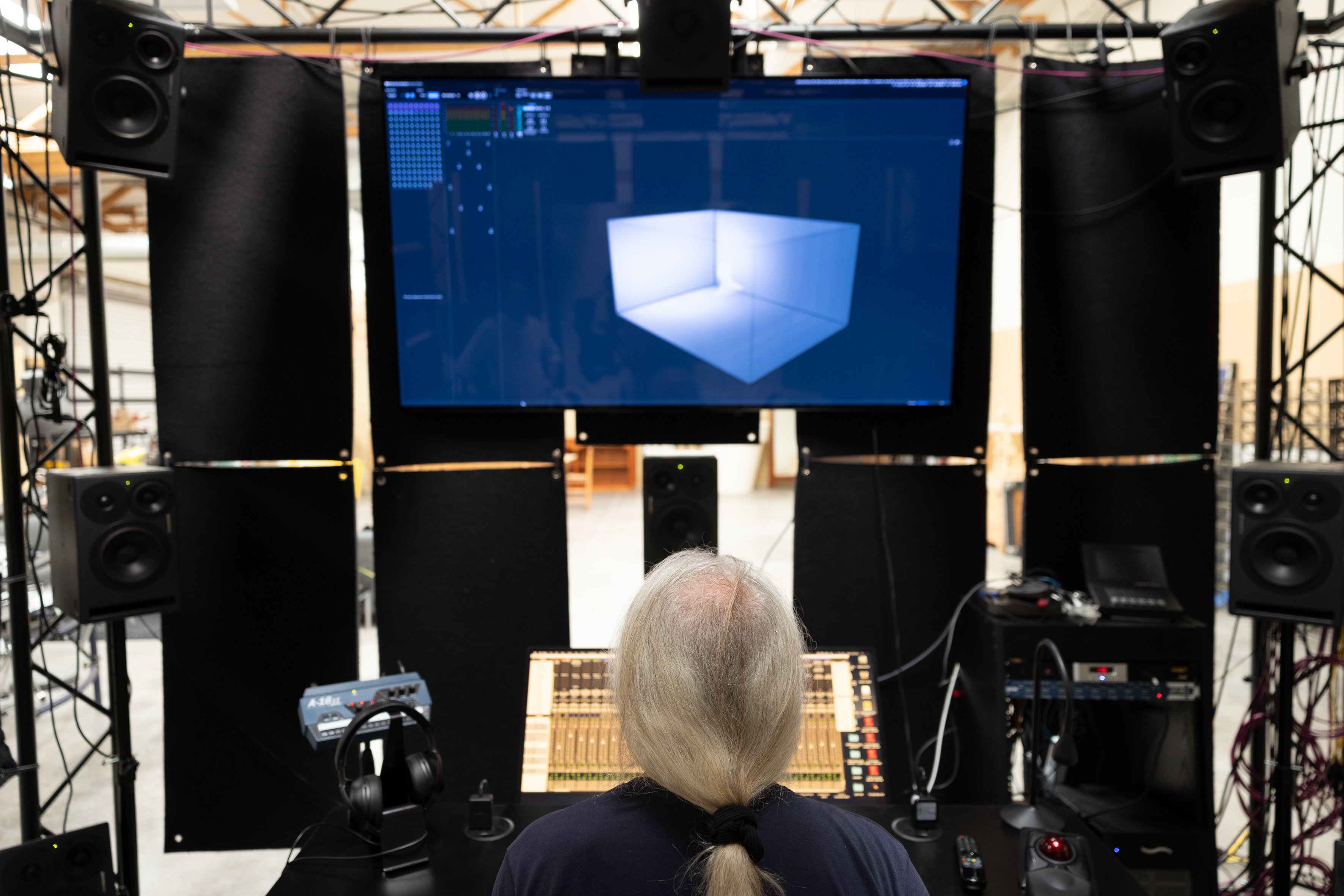
The canvas upon which Penny creates these musical tapestries is simple enough. It’s a 3D box on a computer screen that contains varying numbers of little green balls, each representing a part of the multitrack recording. They fade in and out as instruments start and stop playing, sometimes gently drifting around the virtual space, and sometimes darting with the energy of a furious wasp.
Is there a temptation to fill the box with balls, and make them do all kinds of wacky things just to make the listener understand what the tech is capable of? Absolutely, says Penny: “I’ve had that happen a couple of times. I’d be working on something serious, and someone will come in and say, ‘Man, you’ve got to move stuff’. So we do, and then at the end they say, ‘There’s too much moving’. My objective is to emotionally impact the listener. If you can create that experience, then the machine goes away and what lingers – it could be ten seconds after or for years to come – is that they’ve had this amazing experience.”
If you’ve ever read the classic novel Flowers For Algernon, you’ll have some idea of what going back to listening in stereo is like after hearing a full-fat, cherry-on-top Dolby Atmos mix of Rocket Man. Frankly, it ruins you a little.
The intro seems to physically surround you with buttery-smooth piano and vocals. The mellow ‘oooo’s and acoustic guitars gently bathe you in calmness. And those ‘whooshes’ soar up in front and then actually pass through you. “It’s transcendental,” says Penny. He has a gift for understatement.
Laughter is a common first-time immersive-listener reaction, he notes. Slack-jawed amazement is another. He even recounts a story of a journalist who full-on ugly-cried while listening to an Atmos mix of a Sting track. (“She just turned around and said, ‘I can’t believe it, I’ve never heard music like this’. Then she was up dancing for the next song!”)
But it underlines the fact that even the best tech in the world is still just a tool – one that, if you use it correctly, can genuinely change people.
No wonder he loves his job…
Additional words: Kim Bang
Pictures: Henrik Kastenskov
Sign up to get more great articles
Nothing compares to the satisfaction of knowing – for a fact – that something is as good as it gets


